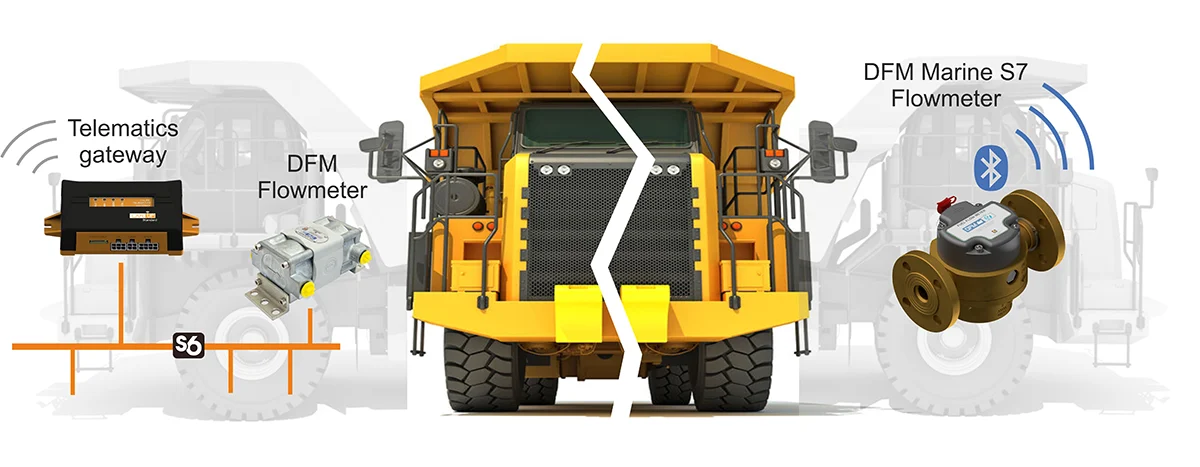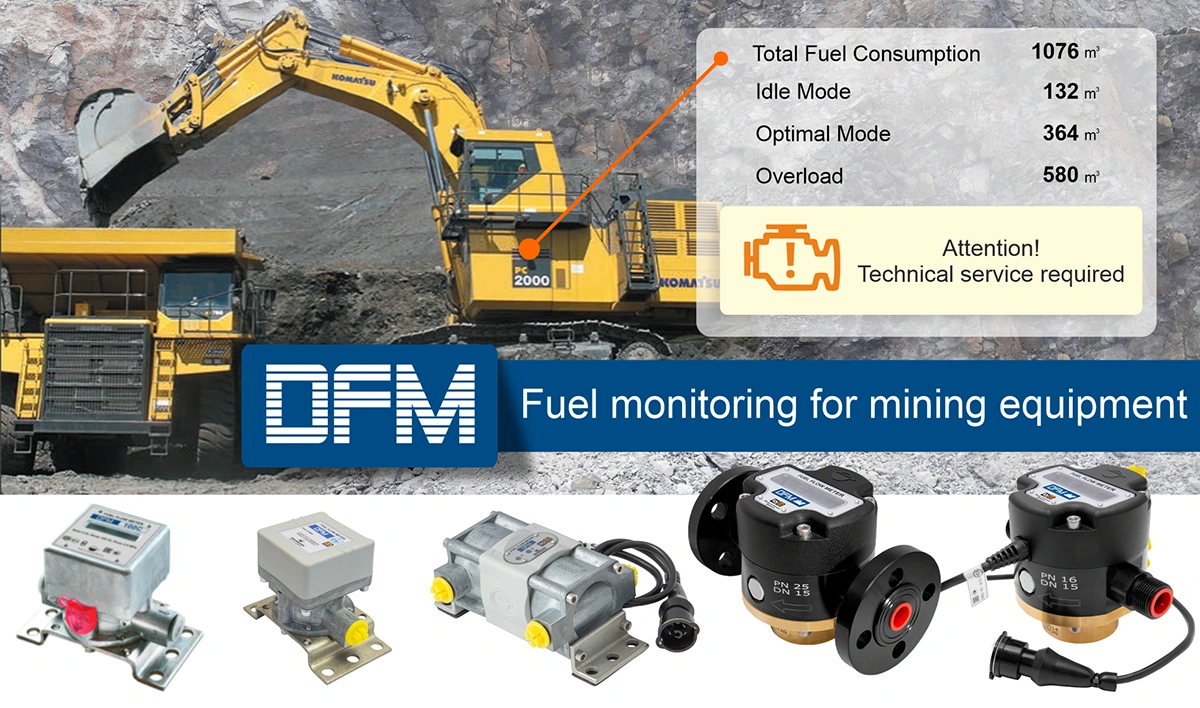More than 2/3 of fleet budget is fuel and maintenance costs. An accurate fuel monitoring system can save up to 30% of those costs, also allowing to extend the lifetime of mining equipment.
Mining equipment operates in harsh climate and terrain conditions, so the most suitable tool for monitoring fuel consumption and engine operation modes is DFM fuel flow meter.
DFM flow meter uses direct measurement method – the equipment installed directly into the fuel lines of the engine and measures instant fuel rate, duration of engine operation, including various load modes – “idle”, “optimal”, “overload”. The accuracy of DFM fuel flow meters is stable and not influenced by inclination angle, vibration, or temperature changes.
DFM flow meters in mining & quarrying

DFM fuel flow meters solve the following tasks of mining equipment fleet:
- Direct fuel consumption measurement, not influenced by terrain level and vibration;
- Fuel monitoring for both mobile and stationary equipment, flow rate from 1 to 25,000 l/h;
- High accuracy of fuel consumption measurement – error 0.5—3%;
- Recording engine operation time, also split by load modes “Idle”, “Optimal”, “Overload”
+ 35 more parameters and counters; - Measuring flow rates separately for “supply” and “return” fuel lines of the engine;
- Built-in battery for autonomous operation, e.g. if no on-board power network available;
- Remote engine and fuel system diagnostics, data gathering for implementing predictive maintenance.
DFM flow meters are equipped with displays (for autonomous reading) and various interfaces for connecting to well-known GPS trackers: CAN J1939/S6, Bluetooth (S7 Technology), RS-232/485 Modbus RTU, pulse output, NMEA2000 protocol.
Case of using DFM flow meters on CAT and Komatsu mining equipment

Key features of the project: the need for differential fuel consumption measurement (separately in the supply and return lines), data transmission to GPS tracker via CAN J1939 interface, instant flow rates are 300-500 l/h, some vehicles have 2 engines.
Reasons for choosing DFM fuel flow meters:
- DFM Marine – specialized for heavy machinery (design, bores, connecting thread, flow range); has an error of just 0.5%; flow rate range of the selected model 40–2,000 l/h.
- “Differential pair” flow meter operating mode without additional computers and calibrations;
- Data transfer via CAN j1939 interface, connection of two and in some cases four DFM fuel flow meters to a single CAN -port of GPS tracker via a single data bus.
Result: fuel consumption monitoring system is used as a part of the telematics system previously implemented by the customer. The system shows real-time information on current fuel consumption, engine operation time, and the total engine operating time in terms of amount of fuel consumed.
The quarry management uses the data for management accounting to determine the effectiveness of the fleet, and also plans to implement predictive maintenance of equipment when enough data has been collected and analyzed to apply machine learning mechanisms.

